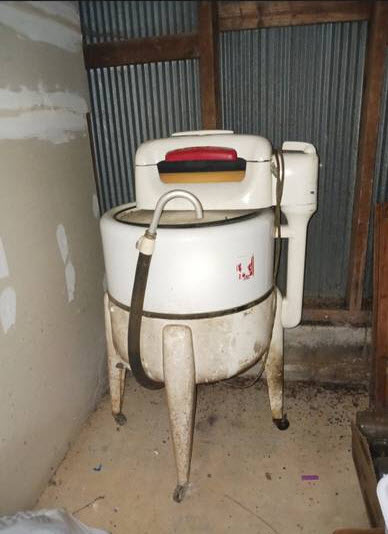History may not be everyone’s favorite subject, but it’s surprising how much we can still discover from it—even if we’ve forgotten most of what we learned in school. Sometimes, a single image can open a window into the past, revealing a world that’s both familiar and entirely foreign.
Take a look at the old-fashioned object in this picture. At first glance, it might leave you scratching your head. It’s not something you see every day anymore, and it’s safe to say that most people today wouldn’t immediately recognize it. But believe it or not, this mysterious item has a direct connection to one of the most mundane chores in our daily lives: laundry.
Yes, that’s right—laundry. This task has been an unavoidable part of human life for centuries. Of course, our methods of washing clothes have come a long way over the years. Today, it’s as simple as throwing a load into the washing machine, pressing a few buttons, and waiting for the spin cycle to finish. Within an hour, you’ve got fresh, clean clothes ready to wear.
However, let’s rewind to a time before modern conveniences. Imagine people hauling baskets of dirty clothes down to the riverbank, scrubbing and beating their garments on rocks just to get them clean. This was no easy task, and it was incredibly time-consuming.
Enter the vintage laundry tool in the photo. Back then, this little gadget made the laborious process of washing clothes just a bit easier. It might look simple to us now, but it was a game-changer in its time. Consider all the effort that went into laundry in those days: fetching water, boiling it, scrubbing, rinsing, wringing out every last drop, and then hanging everything up to dry. Each step was a labor-intensive affair.
Looking back at such tools, it’s amazing to realize how far we’ve come. Tasks that once took hours or even an entire day can now be done with the push of a button. It really makes you appreciate the technological advances we often take for granted.

Isn’t it fascinating to see how even the simplest of chores have been transformed over the centuries? Objects like this may seem outdated, but they tell the story of human ingenuity, resilience, and the quest to make everyday life a little bit easier.





